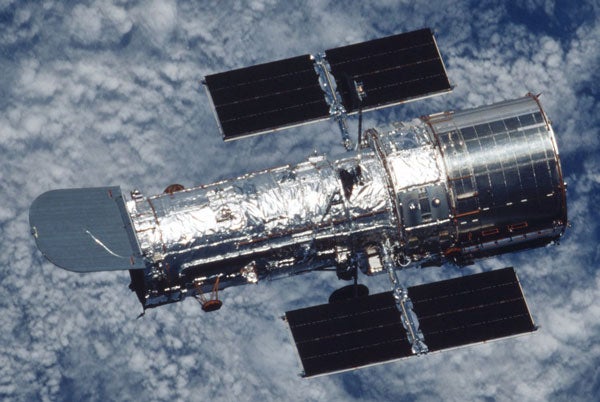The decision to delay the servicing mission comes after engineers completed assessments of the work needed to get a second data handling unit for the telescope ready to fly. The unit will replace one that failed on Hubble in late September, causing the agency to postpone the servicing mission that had been targeted for October 14.
“We now have done enough analysis of all the things that need to happen with the flight spare unit to know that we cannot be ready for a February launch,” said NASA’s Astrophysics Division Director Jon Morse at NASA headquarters in Washington. “The February date was an initial estimate, assuming minimal hardware preparations and test durations that are no longer viewed as realistic. We’ve communicated our assessment to the Space Shuttle Program so it can adjust near-term plans. We will work closely with the Shuttle Program to develop details for a new launch opportunity.”
“Getting ourselves in a position to be ready to launch the Hubble mission will involve many steps, and a significant one took place earlier today,” said Hubble Program Manager Preston Burch at NASA’s Goddard Space Flight Center in Greenbelt, Maryland. “We held a flight certification peer review meeting where every aspect for doing this effort — the inspections needed, all the tests to be conducted, the certification process, and the final flight preparations — was examined. The conclusion was that we have a very good plan in place.”
The Hubble flight spare, known as the Science Instrument Command and Data Handling system, has been at Goddard since it was originally delivered as a back-up system in 1991. The unit currently is undergoing testing and examination to identify and correct any problems. That work will continue until mid-December.
The unit will then undergo environmental assessments that include electro-magnetic interference checks, vibration tests, and extended time in a thermal vacuum chamber. Environmental testing is anticipated to run from mid-December to early March 2009. Final testing will be conducted on the unit, and delivery to NASA’s Kennedy Space Center in Florida is expected in early April.
“The equipment we are dealing with has a flight-proven design,” said Burch. “The original unit on Hubble ran for more than 18 years. We have a lot of spare parts if we encounter problems, and we have most of the same test equipment that was used with the original unit. We also have a lot of experience on our Hubble electrical replica, which uses the engineering model data handling unit.”
The vast majority of the flight hardware, tools and support equipment that will be used during the mission will be stored at Kennedy. Mission scientists will conduct a small amount of new work such as re- lubricating the latches on the Soft Capture Mechanism and testing the motors on the Flight Support System. The Wide Field Camera 3 will remain in its carrier. The Cosmic Origins Spectrograph is in a special double-layered purge system in its shipping container to help support its environmental needs. The new batteries to be installed during the mission are in cold storage at Goddard and will be returned to Kennedy in 2009.
In the meantime, science observations on Hubble that had been suspended continue to move toward standard operations. The current primary camera on the telescope, the Wide Field Planetary Camera 2, was brought back online. On Wednesday, calibration images with the Advanced Camera for Surveys’ Solar Blind Channel were completed. Regular science observations resumed Thursday, and the first science image from the camera was released.
NASA gives go-ahead to November 14 shuttle launch NASA managers completed a review October 30 of space shuttle Endeavour’s readiness for flight and selected the official launch date for the STS-126 mission. Commander Chris Ferguson and his six crewmates are scheduled to lift off to the International Space Station at 7:55 p.m. EST November 14.
Endeavour’s STS-126 flight will feature important repair work to the station and prepare it for housing six crew members during long-duration missions. The primary focus of the 15-day flight and its four planned spacewalks is to service the station’s two Solar Alpha Rotary Joints, that allow its solar arrays to track the sun. Endeavour will carry about 32,000 pounds (14,515 kilograms) to orbit, including supplies and equipment necessary to double the crew size from three to six members in spring 2009. The new station cargo includes additional sleeping quarters, a second toilet, and a resistance exercise device.










